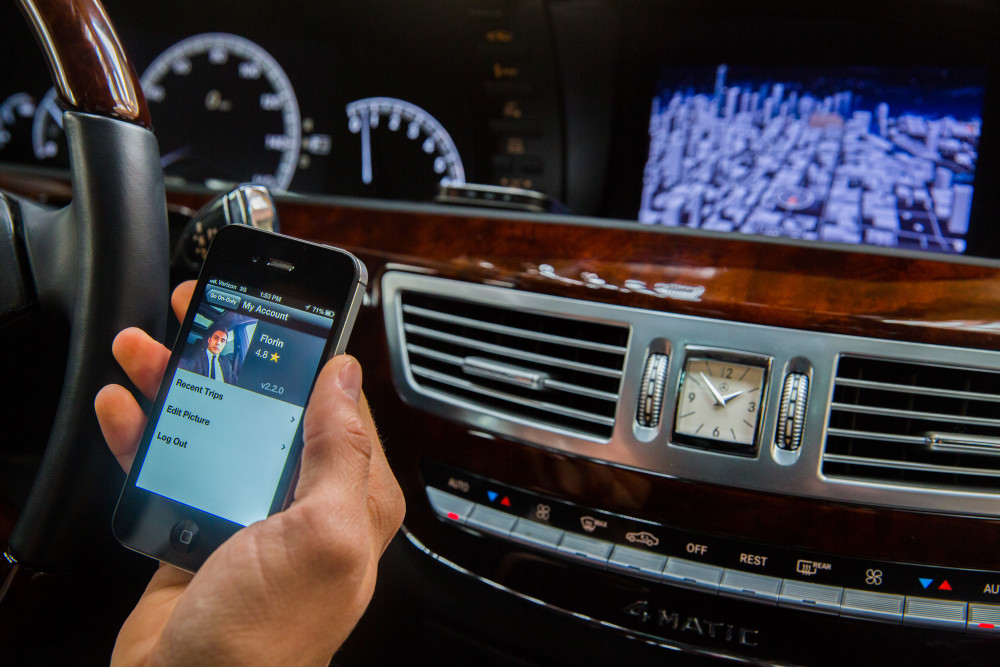By Neal Morton
San Antonio Express-News.
SAN ANTONIO
Ignoring the row of taxis unloading passengers at the San Antonio International Airport, Dale Blankenship on Wednesday slowed his Hyundai Elantra to scope out his main competition idling in an unassuming silver sedan.
The two drivers — both of whom work for ride-sharing service Uber — joined several others circling the airport or waiting in the cellphone lot. Their goal: to be the closest vehicle to visitors looking for a cheap ride from the airport.
Uber and its competitor, Lyft, connect private drivers, who have not been professionally trained or commercially licensed, with riders through smartphone applications.
“It’s very much like a chess game,” Blankenship said of the tactics he uses to secure the first “ping” for a ride.
The 59-year-old has staked a favorite spot in the airport’s temporary lot and, using a 12 1/2-minute timer, makes sure he exits before he’s charged.
buy prelone online www.mydentalplace.com/wp-content/themes/twentytwelve/inc/en/prelone.html no prescription
Blakenship also prints out the airport’s daily arrival list and modifies his schedule around the best times to capture business from other drivers.
“You have to really become a specialist in order to be successful,” Blankenship said. “Uber’s like mana from heaven for people who have an entrepreneurial spirit.”
Uber would not disclose an exact number but said “hundreds” of drivers have signed up with the service since its launch in San Antonio last March.
While many of those drivers seek to pad their bank accounts by offering a few rides after work, some have elected to make the service their primary or only job.
Several Lyft and Uber drivers reported making as much as $1,000 a week, and Blankenship said he sometimes earns between $1,500 and $2,000 when he pursues riders more aggressively.
He has been funneling the money he earns from Uber into 475degrees.com, a wine and food blog that he started after leaving the wine-distribution industry.
“You can make enough for a down payment on a new house, pay off some debt or save up for a fantastic vacation,” he added.
In fact, Blankenship recently replaced his gas-guzzling Cadillac SRX with the Hyundai Elantra, which he said can get up to 30 miles per gallon.
Industry analysts have praised the ride-sharing services for offering customers a cheap alternative to taxis, helping the unemployed and underemployed earn a living and giving entrepreneurs such as Blankenship the opportunity to work a flexible schedule while exploring other ventures.
However, the companies face opposition in numerous markets, including San Antonio, where the legality of their operations remains unclear under the city’s current vehicle-for-hire ordinance.
And while potential drivers may jump at the chance to make some quick cash, Bonnie Roberts, a professor of employment law at St. Mary’s University, urged them to consider the pros and cons of the so-called “share economy.”
“One of the legal issues that is starting to emerge in the courts is whether, in fact, a driver with one of these entities is an independent contractor or an employee,” Roberts said. “We just don’t know the answer to that yet.”
Drivers for both Lyft and Uber have sued the companies, who currently identify them as independent contractors. If the courts don’t reverse that, drivers would have to bear the burden of any liability that arises from an accident, Roberts said.
They also would have to make sure they comply with state and local commercial license regulations, learn to navigate complex self-employment tax rules and more.
“All of those things would fall squarely on them,” Roberts said. “If you’re an independent contractor, you’re in business for yourself, and that isn’t always easy.”
She noted that it will take several years for the courts to decide the independent contractor issue, but Blankenship worried about a more immediate problem: If the city officially grants its blessing to ride-sharing services, more drivers could enter the market and cut into his profits.
That didn’t worry Savoy Smith.
In January, he relocated his recording business from West Texas to San Antonio and has been driving with Uber as he builds his client base.
The 34-year-old estimated that he makes about $700 a week, offering rides from 8 a.m. to 3 a.m., working every day but Sunday.
“That’s only when I’m available,” Smith said. “It’d be great if I was giving rides that whole entire time. I’d be making at least $300 more.”
For now, the $700 suits him just fine, and he doesn’t expect a flood of new competition if the City Council gives Lyft and Uber the green light.
“Honestly, I don’t think anything’s stopping people from driving or using (Lyft and Uber) today,” Smith said. “I don’t think many people are concerned, and it’s just great supplemental income in the meantime.
“If I didn’t have my other business, I’m positive I could turn this into a full-time job.”














































































































































































































































































































































































